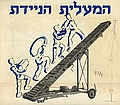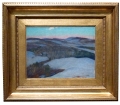| Newsletter for Collectors - Vol 10.2 | March 2, 2016 | | | Home • What‘s New • Photographers • Online Exhibitions
Contents • Alphabetical • Styles and movements • Articles
Visual Indexes • Galleries & Dealers • Timelines • Techniques
Library • Contact us Welcome to another Luminous-Lint Newsletter.
Understanding Photohistory using Visual Indexes to Techniques and Processes |
| |
Alan Griffiths
Screenshot of the "Cars" visual index on Luminous-Lint
2016, 23 January
Screenshot
Luminous-Lint
LL/64580
| |
To date the histories of photography have been largely, but not entirely, based on themes rather than the techniques and processes. There are many books on techniques but this is not what I mean - I'm interested in the photographs taken rather than the chemical processes. It makes sense that books should concentrate on themes but I need to reverse this for certain sections of Luminous-Lint.
Using gelatin silver prints as an example, if we can bring together photographs from each of the themes and place them on a single webpage we will get an overall grasp of black and white photography in the twentieth century. Inevitably these are a partial story but useful all the same as they provide visual matrices of images where patterns can be analyzed and highlighted.
Once the images are brought together, and around 1,000 should be a useful starting point for gelatin silver prints, texts can be added in that link them to the more detailed sections on Luminous-Lint. For example the visual indexes on Documentary photography would lead one onto photographers such as Lewis Hine and Larry Clark or topics such as the FSA, the New York Photo League or Mass Observation.
A few screenshots from the many visual indexes show the power of this approach and linked to the Photohistory Visualizer (PhV) that has been described in earlier newsletters there is immense flexibility to navigate through the labyrinthine histories of photography.
Screenshots from Luminous-Lint Visual Indexes
Visual indexes are continually improving groups of connected images. Here there are indexes of daguerreotypes of ethnographic portraits, gelatin silver prints of war photography and a selection of photographic medals and awards. Each is an ever-expanding visual history of a subject. | 
LL/65645 | 
LL/65646 | 
LL/65517 |
Most of the examples given above are from English-speaking countries but we need to ensure global coverage and so suggestions for images to be included are always welcome.
Most exhibitions include 60-200 objects on walls with supporting captions and explanatory panels - these are a curatorial selection from a far wider range of material that because of appropriateness, availability, rights issues, space, time and funds couldn't be included. We are always seeing partial histories and they are preserved once the exhibition is taken down from the physical walls in website of varying duration and catalogs. The contents are rarely if ever updated as other demands take over and the now static exhibitions become closed silos of knowledge that are not linked to each other except through citations in publications.
A rhetorical question is - does it have to be like this?
Obviously not in an age of fluid information but we need to get our heads away from the idea of project completion to continuous progress where we accept there is always room for improvement. The silos of knowledge stored within exhibition catalogues need to be broken apart and reused in more imaginative ways. We are seeing signs of this happening with the Metropolitan Museum of Art and The Getty allowing free access to large numbers of their catalogues. This is an excellent start with hundreds of books available to be read online or downloaded as PDFs but they remain silos. Long term we need to be able to link at the article, paragraph or sentence level to reuse this content as required to create fresh ways of sharing ever-changing content. This goes against the nature of scholarly publication in many ways as one of the foundations of academic publication is the stability of the published record. No one would say that there is only one set of photographs that could be used to explain a theme or that there is a single paragraph that explains the motivations of the f/64 group. Ideas and their supporting visuals are fluid. Luminous-Lint is based on continuous improvement where as each image arrives in it becomes a part of a mesh of knowledge where although the mesh keeps expanding the holes are getting finer.
Subscriptions are available for those who want to go far deeper into the many histories of photography and these are now extremely detailed incorporating vast amounts of content only available on Luminous-Lint thanks to all the private collectors and the relatives of photographers.
Thanks to all those who continue to support Luminous-Lint in so many ways.
Requests for further information... |
Advertising and commercial photography
Distinguishing between commercial and advertising photographs is not straightforward and requires contextual understanding such as associated text and logos to confirm that the image was used to advertise a product or service. If we look at the three images by Alfons Himmelreich of a Kidma moveable lift the first is a straight commercial product shot whereas the other two use the same photograph for advertising as the context makes clear.
Advertising and commercial photography are frequently ignored or given limited coverage in histories of photography and they were not mentioned in the 1949 edition of Beaumont Newhall's The History of Photography from 1829 to the Present Day even though photography was widely used for both purposes from the 1840s onwards. In 1988 The Art of Persuasion: A History of Advertising Photography by Robert A. Sobieszek was published and this started to readdress the balance with books coming out on the photographs of Josef Sudek, Edward Steichen, József Pécsi, Ralph Bartholomew and others.
To improve these sections on Luminous-Lint I'm seeking examples of advertising and commercial photography from all areas of the world from private collectors and institutions. Many thanks. | 
LL/18345 | 
LL/18346 | 
LL/18347 |
Sports and pastimes
From the earliest days of photography amateur photographers have lovingly documented their sports and pastimes and every sport from American football to wrestling has been covered. Trips to the country for ice skating, hunting and fishing have been documented in glorious rustic detail.
I'd be interested in hearing from private collectors who have examples of different sports and pastimes. All sports and pastimes are of interest from the most active chess game to sunbathing on a beach. | 
LL/16206 | 
LL/49219 | 
LL/39437 |
Paintings by photographers
Many photographers started out as artists including Daguerre and I'm always interested in engravings, paintings and sculptures that show their works. These examples are by Robert Macpherson "The Forum, Rome", Henri Le Secq "Famille italienne au repos dans une architecture" and Edward Steichen "Snow Bound - Dawn". Let me know if you have any favourite artworks by photographers. | 
LL/65656 | 
LL/58321 | 
LL/44138 |
Fabricated realities
Many contemporary photographers including Paolo Ventura, Lori Nix, Sandy Skoglund, Les Krims, Carl Zimmerman and Sarah Hobbs have fabricated realities and then photographed them. I'm interested in your suggestions for contemporary photographers from around the world who are pushing the boundaries. | 
LL/47827 | 
LL/56432 | 
LL/30392 |
Photographs that include data
Many scientific instruments use photography to document experiments and at times additional data is recorded on the negative as an aid to analysis. Within photohistory these photographs are rarely shown and I'm seeking further examples. | 
LL/50413 | 
LL/36547 | 
LL/65668 |
|
|
Ernst Haas (1921, 2 March - 1986) was born - Austria, Vienna. Worked for Magnum and was an early adopter of color photography. Some of my favorite images include his color motion studies.
Louis Faurer (1916, 28 August - 2001, 2 March) died - US, NY, New York. American photographer.
Conway Weston Hart (1821 (ca) - 1864, 2 March) died - India, Calcutta.
Ugo Mulas (1928, 28 August - 1973, 2 March) died. Italian photojournalist which started his career as a stage photographer.
Alfred-Nicolas Normand (1822, 1 June - 1909, 2 March) died - France, Paris. Architect and calotypist who changed later to using bromide gelatine. He collaborated with the "Roman Photographic School" which was a group of intellectuals who were passionate about photography and calotypes.
Thomas O. Sheckell (1883 - 1943, 2 March) died - US, NJ, East Orange. |
| |
|

